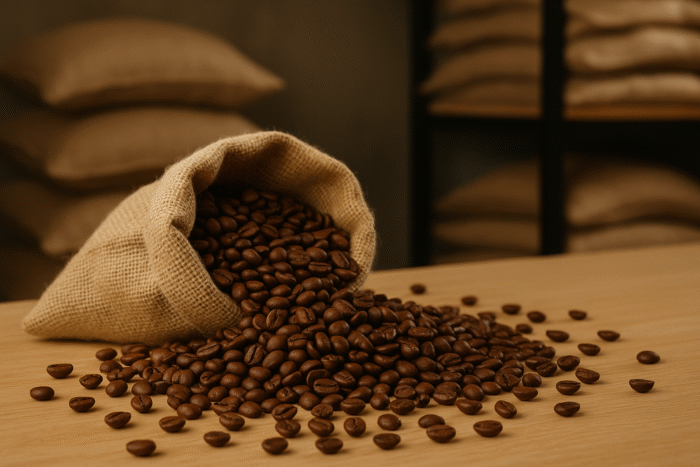Dubi – Qahwa World
Coffee futures rallied sharply on Friday as shrinking exchange inventories and trade tensions tightened supply.
December arabica coffee (KCZ25) closed higher by +6.70 cents (+1.80%), while November robusta coffee (RMX25) gained +107 points (+2.61%). The spike followed reports of declining ICE-certified inventories. Arabica stocks fell to a 1.5-year low of 576,753 bags, while robusta inventories dropped to a 1.75-month low of 6,464 lots.
The pressure stems largely from the 50% U.S. tariffs on Brazilian coffee imports, which have curbed new contracts and reduced flows into the U.S. market. Brazil typically supplies about one-third of America’s unroasted coffee, making the tariffs a key bullish driver.
Weather and Crop Developments
Earlier last week, arabica fell to a one-month low after rains eased dryness in Minas Gerais, Brazil’s largest arabica-growing region. Somar Meteorologia reported that rainfall would persist through the week, though conditions remain below seasonal norms.
September is critical for coffee tree flowering, and earlier dryness had lifted futures to multi-month highs. Somar noted Minas Gerais received only 10.5 mm of rain in mid-September, about 73% of the historical average. Meanwhile, NOAA raised the likelihood of a La Niña system to 71% for October–December, a development that could intensify dryness and threaten Brazil’s 2026/27 crop.
Adding to supply concerns, Brazil’s crop forecasting agency Conab cut its 2025 arabica estimate by 4.9% to 35.2 million bags and lowered its total coffee output forecast to 55.2 million bags, down from 55.7 million in May.
Export Trends
Tightness in global supply is evident. The International Coffee Organization (ICO) reported July exports fell 1.6% year-over-year to 11.6 million bags, while cumulative exports for October–July were down 0.3% to 115.6 million bags.
Brazil’s shipments have slowed dramatically. The Trade Ministry said July unroasted exports fell 20.4% y/y to 161,000 MT, while exporter group Cecafe reported green coffee exports dropped 28% to 2.4 million bags. Arabica exports slid 21%, robusta plunged 49%, and cumulative January–July exports were down 21% to 22.2 million bags.
Vietnam’s Contrast
On the bearish side, Vietnam is expecting a bumper harvest. The world’s largest robusta producer forecasts a 6% increase in 2025/26 output to 1.76 MMT (29.4 million bags), a four-year high. Its coffee exports for January–August rose 7.8% y/y to 1.14 MMT, adding pressure to robusta prices.
Brazil’s harvest is nearly complete, with Cooxupe, the nation’s largest coffee co-op, reporting 98.9% finished as of mid-September. Meanwhile, the USDA’s Foreign Agriculture Service (FAS) projects world coffee production in 2025/26 will rise 2.5% to a record 178.7 million bags. That includes a 1.7% drop in arabica but a 7.9% increase in robusta output. Ending stocks are expected to climb 4.9% to 22.8 million bags.
Still, trader Volcafe forecasts a widening arabica deficit of -8.5 million bags for 2025/26, compared to -5.5 million this year—marking the fifth straight year of supply shortfalls.
The post Coffee Prices Surge as ICE Inventories Hit Multi-Year Lows appeared first on Qahwa World.




